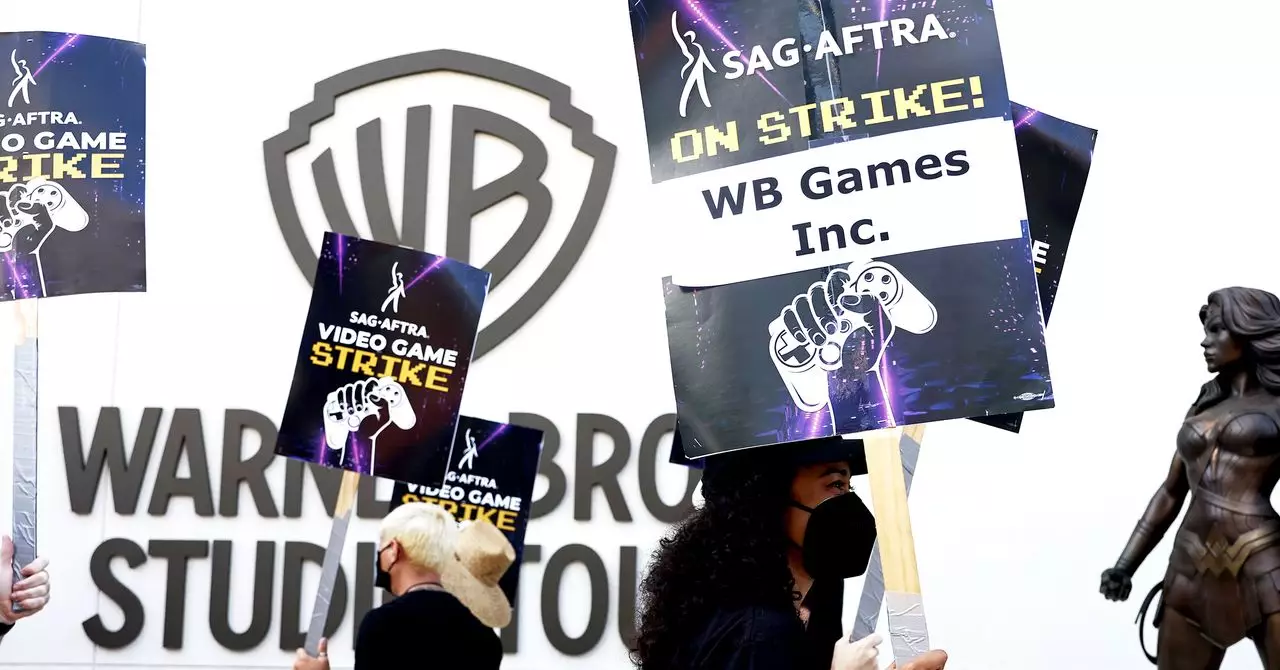In a groundbreaking victory for performers and the creative industry, the recent ratification of a new contract by SAG-AFTRA signifies much more than a standard labor win—it marks a pivotal stand against the unchecked encroachment of artificial intelligence into human artistry. After nearly a year of relentless negotiations and a firm strike, performers have secured not only raises but crucial safeguards that affirm the value of human talent amid a rapidly shifting technological landscape. This development exemplifies the resilience of artists determined to defend their creative integrity in a digitized era that threatens to commodify their very essence.
The core concern motivating this union victory is the ominous rise of AI-driven substitutes that could replace live performers with AI-generated digital replicas. Actors who bring characters to life through voice, motion capture, and even their likenesses now have legal grounds to control their digital representations. These provisions—binding agreements for consent and disclosure—are essential in ensuring performers maintain agency over how their voices and images are used, especially as AI technology becomes increasingly sophisticated. The fact that these measures are codified in a binding contract reflects a recognition that art is an extension of human expression deserving respectful treatment, not just a data point for further automation.
The Threat of AI and the Industry’s Response
Artificial intelligence’s encroachment into entertainment is no longer a distant threat; it is actively reshaping the industry’s landscape. Examples like Fortnite’s AI-generated Darth Vader demonstrate both the allure and danger of AI synthesis—initially promising to enhance gameplay, but quickly exposing vulnerabilities when AI creates unpredictable, inappropriate content. Such incidents underscore the necessity for safeguard mechanisms, like those negotiated by SAG-AFTRA, to prevent societies from replacing authentic human performances with machine-made imitations.
The industry’s rush toward AI-driven solutions reveals a shortsighted obsession with cost-cutting and efficiency, often at the expense of creators’ rights. SAG-AFTRA’s stance, exemplified by its challenge to Epic Games’ unnotified AI use, emphasizes that replacing performers without proper notice and negotiation devalues their artistry. The union’s filing of an unfair labor practice charge exemplifies their readiness to confront exploitative practices and highlights the need for binding regulations that respect performers’ contributions in both the present and the future.
Fortifying the Legacy of Deceased Artists
One of the most striking aspects of the new contract is its protection of the rights of deceased performers, exemplified by the case of James Earl Jones. With his permission given before his death, his voice could be digitally replicated through AI, raising essential ethical questions. The contract’s provisions ensure that even after death, an artist’s likeness and voice cannot be used without explicit consent—ensuring respectful treatment across generations.
This framework sends a powerful message: digital replicas of iconic voices are not commodities to be exploited at will. Instead, they demand careful, transparent agreements reflecting the respect owed to the artistry and legacy of performers. AI should augment human performances, not diminish their importance or reduce them to mere digital assets.
Guarding Creativity from Unchecked Automation
Ultimately, the contract’s success underscores a larger truth: art is intrinsically human. As AI becomes more capable of simulating performance, performers and advocates must vigilantly protect the human element that defines creativity. The new safeguards serve as a blueprint for industries beyond gaming—an assertion that automation should serve as a tool, not a replacement, for human ingenuity.
The broader implications are clear: industry leaders must recognize the importance of ethical boundaries and respect for performers. Without these protections, the advent of AI risks commodifying human expression, stripping creative industries of authenticity and emotional depth. By standing firm, artists are asserting their rightful place in a digital age—one where technology enhances, not erases, human artistry.

